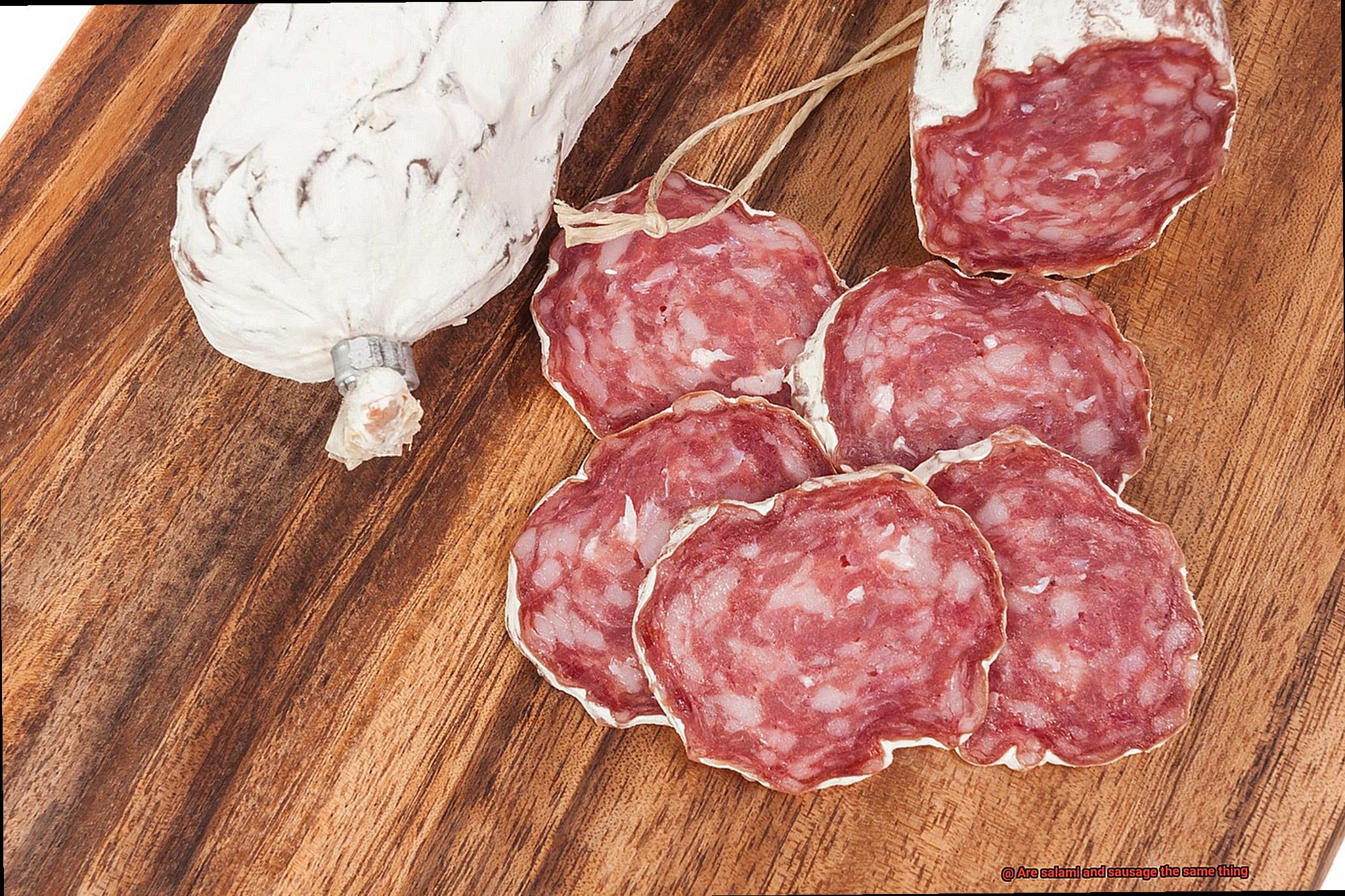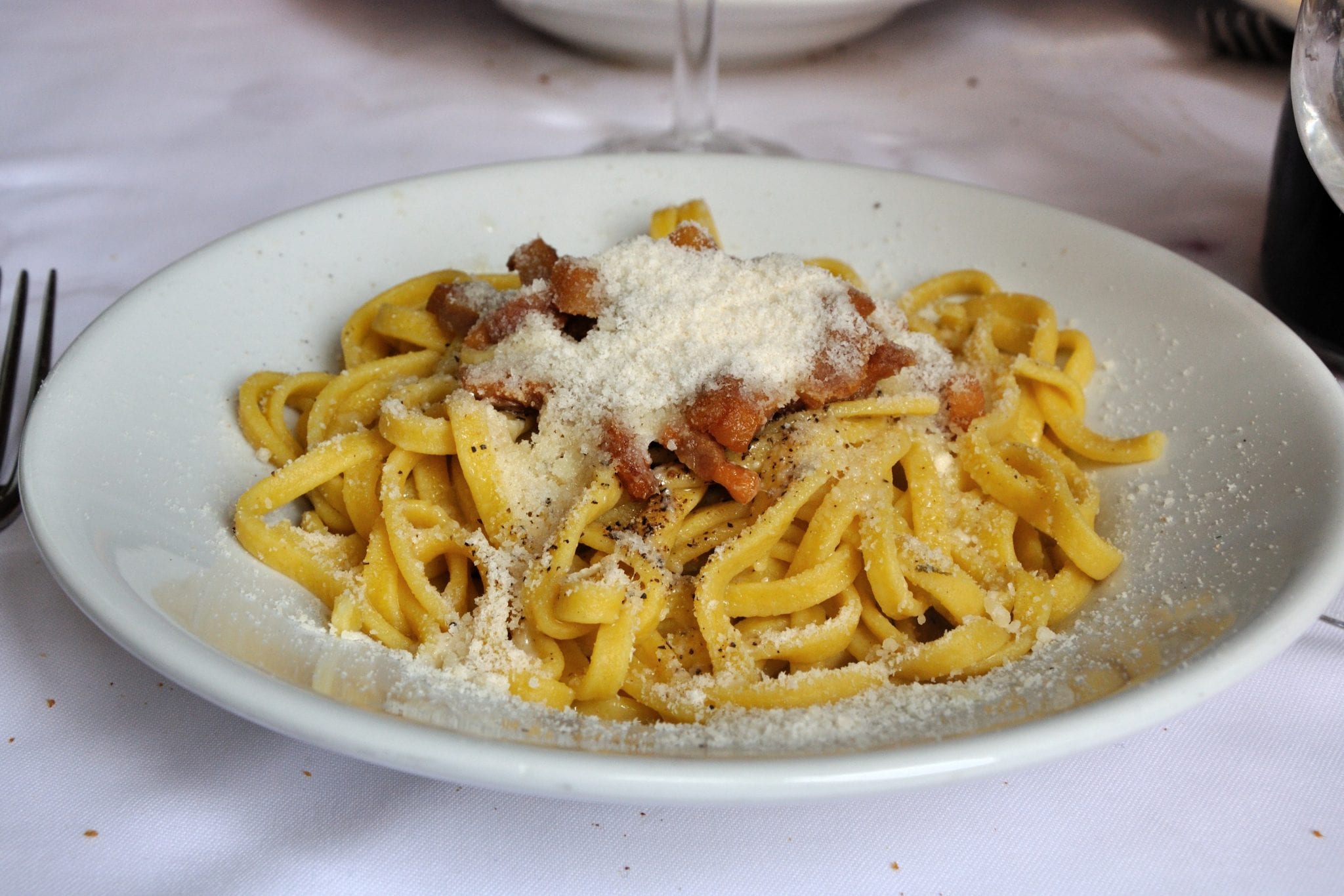No trip to Italy is complete without trying some salumi – the catch-all term for Italian cured meats. You’ll see this word (along with the actual product) everywhere in Italy, but the sheer abundance of different types and styles can be overwhelming. Never fear, our guide to Italian cured meats is here to help.
So what exactly are “salumi”? Think of them as Italian deli meats or Italian cold cuts. The word salume (the plural is salumi) literally means “salted meat”.
Though most Italian salumi are made from pork, you can find salumi made from wild boar, deer and even horse. (We’ve told you before, Italians love pork – in all its forms!) Actually, there are hundreds of different kinds of salumi in Italy. Italian cured meats vary based on region, fat content, casing, seasoning and methods of curing.
The umbrella term “salumi” includes all Italian cured meat and can be broken into 3 sub-categories: salumi, salami, and salsicca.
Confused yet? It’s okay, there are a ton of choices. And while nothing beats taste testing to learn more about all the different salumi, our guide to Italian cured meats will help you know what it is you’re eating – whether it’s salumi, salami or salsiccia!
Salami is a type of Italian cured sausage, generally dry and hard compared to other types of sausage. Italian Salami is made from ground meat mixed with seasonings and stuffed into a casing, then dry cured until a desired hardness is achieved.

Prosciutto, crudo and cotto
Prosciutto is by far the most famous type of salumi. Made from the leg of the pig, it is a dry-cured ham that comes either uncooked (prosciutto crudo) or cooked (prosciutto cotto, similar to what Americans simply call “ham”).
Prosciutto Crudo di Parma is perhaps the most well known in the world of salumi, named after its hometown of Parma, though Prosciutto di San Daniele vies heavily for the world’s attention. The difference is in the aging. Prosciutto di Parma is aged about 10-12 months, while San Daniele is aged 15-18 months and is much sweeter than Parma ham.
If you love your ham as much as we do, check out our blog on everything you need to know about prosciutto.
Speck is a type of prosciutto, but the flavor is very different. It’s smoked, robust and usually sliced very thin. While prosciutto on a pizza is normal, go for the speck with scamorza cheese to really impress your waiter! Made in Trentino-Altro Adige, the pig thighs are smoked, dry salted and aged 5-6 months to give it its distinct smoky flavor.
Bresaola is a super local cured meat made in Valtellina in Lombardy. One of the few cured meats made of beef, the cut is super lean, with almost no fat at all. Salted, spiced and air dried, bresaola is known for its rich red color. Try eating it simply with a spritz of lemon and a bit of oil to really taste its flavor.
We have “baloney,” but those living in the real town of Bologna have mortadella, a cured bologna-style meat that is worlds apart from supermarket slices of bologna. While baloney can be rubbery, mortadella is smooth and has an authentic taste of pork. It also has huge cubes of lard throughout for flavor. Sometimes, pistachios and garlic are added as well. Mortadella is often eaten as a pre-dinner appetizer.
Pancetta is Italian bacon made from pork belly, cured and spiced with some black pepper. It’s the closest thing to the bacon we know and love, and possibly even more delicious! It’s not usually eaten plain for breakfast. Instead, it’s used to add flavor to favorite dishes. Similar cuts of meat are lardo, which is just pure fat, and guanciale, which is made from pig cheek (guancia, in Italian) and also has a high fat content. High fat, yes, but the Italians won’t ever hold back on flavor!

If any of these meats sound delicious to you, the regions of Bologna and Emilia-Romagna are a must-visit. Read about some of their meaty, mouth-watering specialties in our blog.
Salame Genovese or Milanese
Genoa Salami is perhaps the most popular type of salami in the United States. It is very finely ground with tiny flecks of fat visible. Milano Salami is similar, but ground even finer. Actually, there are nearly as many types of salame as regions in Italy. Tuscan salami tends to have larger chunks of fat in it, while spices and herbs liven up other types of salami like fennel salami.
Salami piccanti (salame piccante, in the singular) are what Americans call pepperoni. Pepperoni in Italian are actually sweet bell peppers, so be careful what you order for your pizza! Most notably made in Calabria, salame piccante is salame spiced with red peperoncino peppers (hence the name mix up).
Nope – that’s not a typo. ‘Nduja is from Calabria in the south of Italy. Pronounced “en-du-ya”, the salame gets its name from the calabrese dialect. ‘Nduja is a spreadable spicy salami made of various parts of a pig, including the shoulder, belly and liver. The most important ingredients, however, are the spicy red peppers that are generously added before aging the meat up to one year. (Can you see a trend with the Calabrese and pepperoncini?) Be careful because ‘Nduja is hot! You can find it in an antipasto spread, in pasta sauces or, of course, on top of a pizza.Check out more of Calabria’s delicious foods in our blog.
Soppressata is made from a variety of pig parts as well, which vary region to region. Actually, soppressata can be a type of salame, like the types from Tuscany and Liguria, or a type of cured dried sausage, like the variations from Basilicata, Calabria and Puglia. Though spices and seasoning vary, it is most commonly made with red peppers and can be a bit spicy, though not as spicy as ‘Nduja. Usually it’s a bit more coarsely ground than salami, making it the perfect rustic salame to slice down and eat plain with just a piece of bread and cheese.
In order to be considered a cured Italian sausage, meat has to be ground before it’s encased. It differs from prosciutto and speck, which are made from an entire cut of the animal. In general salami falls into this category, but there are some that can only be defined as sausage. Here are two of our favorites:
Luganega is sausage flavored with fennel seeds and black pepper. You can often find it in risotto recipes, such as risotto alla monzese, made with saffron and savory luganega sausage.
Cotechino is especially popular in Emilia-Romagna and Lombardia. A large cut of raw sausage, it’s usually boiled for hours then mixed in with lentils. This rich meal is traditionally eaten on New Year’s Eve for good luck. If you like the sound of cotechino you can read more about Italy’s regional food in our all-inclusive post, There’s No Such Thing As Italian Food (And What to Eat Instead).
Want to learn even more? We’d be happy to teach you the differences in our Italian Food Tours in Florence, Rome, Naples, and Venice!
A brief history of sausages | Edible Histories Episode 8 | BBC Ideas
FAQ
Is salami the same as sausage?
Which is healthier salami or sausage?
Is summer sausage and salami the same thing?
What is salami called in America?
What is the difference between salami and sausage?
The first difference to note is based on how the 2 are manufactured. Salami is cured sausage that is fermented and air dried whereas a sausage is made using ground meat and it has a skin around it which protects it from falling apart. Furthermore, salami can only be made using either beef or pork but sausage can be made using a wide range of meats.
Sushi vs Sashimi: Which is healthier?
Sashimi is fish based and is high in Omega 3 fatty acids. Sushi on the other hand have more calories and carbs than sashimi. Sushi is high in carbs because of the rice content. Raw or vinegared fish is used in sushi making it rich in omega 3 fatty acids. Both dishes are safe to consume, but it is not advised for pregnant women and those with compromised immune system because of raw sea food. Raw sea food may contain harmful microorganisms which may cause diarrhoea, vomiting and allergic reactions.
Is salami a cured sausage?
Salami is a cured sausage that is fermented and air-dried. It is typically made from beef or pork. Sausage is usually made from ground pork, beef, or veal along with salt, spices, and other flavorings. Some sausages are sold raw and can be cooked by pan-frying, broiling, or barbecuing.
Can you eat sausage & salami in a sandwich?
Sandwiches: Salami and sausage can both be used in sandwiches, but the choice between the two will depend on the type of sandwich being made. Salami is a great choice for a classic Italian sandwich, while sausage might be better suited for a breakfast sandwich or a sausage and pepper sandwich.
